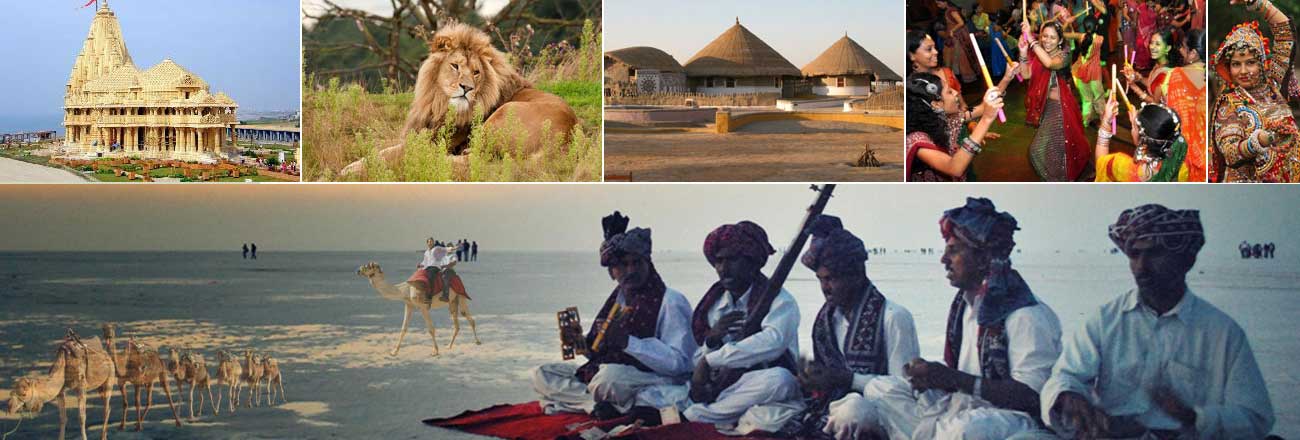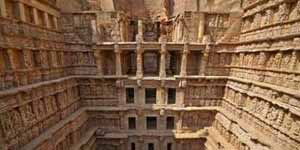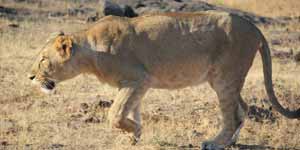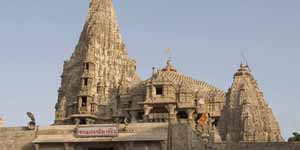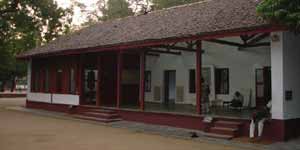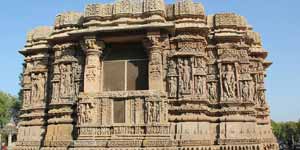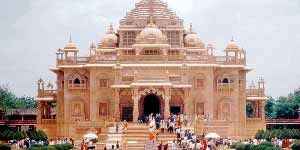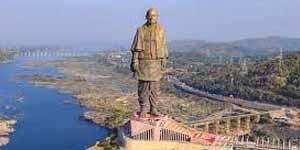
Gir National Park
The Gir National Park the largest compact tract of dry deciduous forests in the semi-arid western part of India is the last abode of the big and regal predator, Asiatic lion (Panthera leo persica), an endangered animal species. The sanctuary is internationally acclaimed for successfully saving this precious species from the brink of extinction. It was declared as a sanctuary in 1965. Subsequently out of the 1153.42 sq. km area of the sanctuary, an area of 258.71 sq. km. was declared a National Park.Gir Forests has a topography made up of successive rugged ridges, isolated hills, plateaus and valleys. Besides, being the last abode of Asiatic lions, Gir Forests forms a unique habitat for many mammals, reptiles, birds and insect species along with a rich variety of flora.
The overwhelming presence of the omnipotent big cat diverts the attention of the common man from the remarkable bird population that the sanctuary has. However, the birds of Gir sanctuary did attract the great ornithologist, Dr. Salim Ali who believed that, had the Asiatic lions not been there, the area would have been one of the most fascinating bird sanctuaries of the country.
People mostly link Gir with "Maldharis" who have survived through the ages by having symbiotic relationship with the lion. They are religious pastoral communities living in Gir. Their settlements are called "nesses". At present, Gir forests of Gujarat (India) is the only place where this race of lions i.e. Asiatic lion is found in its natural habitat.
Unlike the other big cats, lion is tolerant of the presence of human being and it even lives near the human settlements. During the last century in British rule, lion population touched an all time low of 20 in 1913. The serious conservation efforts by the then Nawab of Junagadh saved the species from the brink of extinction. The subsequent efforts by the Forest Department has successfully brought the population to the present respectable status of 523 numbers of this majestic animal.
History of Gir National Park
Asiatic Lion at Gir National Park The area of Gir National Park was once the hunting ground for the Britishers during their reign in India and while hunting these great numbers of tigers and lions accompanied by several Rajas and Maharajas of the region, it was considered as the matter of great pride. It was in the year 1899, the major counts of lions decreased sharply with the effect of famine and as a result Lord Curzon cancelled his trip in Gir which was scheduled for shooting upon invitation by the nawabs of the region. The effect of famine was so great that Lord Curzon even advised the residents of the area to save the remaining lions.
By the time to save the more vulnerable acts like hunting and poaching, the Government of India banned the hunting process in the area in the year 1960 and today with an approachable count of increase in lions the area is only available for photo safaris. Today the park is recognized as one of the most important protected areas in Asia due to its supported species. Gir is accustomed of unique ecosystem with diverse flora and fauna and is now considered as one of the most important protected areas in Asia due to its unsupported species. The various initiatives and efforts by the Indian Government and the NGOs brought many changes in the population of the Asiatic lions in the year. Where in 2005, the count rose to 359 and again during the April 2010, the reserve witnessed a greater rise in the count to reach by 52 as compared to 2005 ratio. The lion breeding program included the park and its surrounding area has bred about 180 lions in its captivity since its inception.
Subtle Glimpses Of Major Attractions At Sasan Gir :
Animals
The entire forest area of the Gir National Park is dry and deciduous which provides best habitat for Asiatic Lions. As per the new statics of 2015, the entire Saurashtra Region is inhabited by 523 Lions and more than 300 Leopards. Apart from these two animals the park is a home to two different species of Deer. The Sambar is counted largest Indian Deer. The Gir forest is also known for the Chowsingha – the world’s only four horned antelope. The Jackal, striped Hyena and India Fox are some of the smaller carnivores found in Gir Forest.
Birds
The exotic flora of Gir National Park gives shelter to more than 425 species of birds and moreover the sanctuary has been declared an important bird area by the Indian Bird Conservation Network. Gir is also habitat of raptors like critically endangered white-backed and long-billed vulture, the Egyptian Vulture, the vulnerable Greater spotted Eagle and the endangered Palla’s Fish Eagle. The crested Serpent Eagle, the Changeable Hawk Eagle and other Birds of prey breed in the forests of Gir. Birds usually can be spotted while driving around Gir are the Asian Paradise Flycatcher, the Red-breasted Flycatcher, the Fantail etc.
Reptiles
Sasan Gir is blessed with more than 40 species of reptiles and amphibians. Kamleshwar – a large reservoir in the sanctuary is the best spot where Marsh Crocodile can be seen in large numbers. Park has even many species of snake including King Kobra, the Russell’s viper, Saw-scaled viper and the Krait. The star tortoise and freshwater turtles could also be seen in the sanctuary. It also has a large population of marsh crocodiles and other reptiles which include star tortoise, soft-shelled turtle, monitor lizards and the Indian rock pythons. The crocodile hatchery at Sasan Gir National Park is also an interesting place to see.
Bakula Region
One of the ancient forts in India, the Ranthambore Fort is declared as the UNESCO world heritage site due to its historical significance. The fort is located inside the Ranthambore National Park, at the distance of 13 km from the Sawai Madhopur railway station. This heritage fort is said to be built in 944 AD and has witnessed the long history of Rajasthan. The epitome of valor and pride of the Rajput rulers of the various Kingdoms, the Ranthambore Fort was the strategic fort and thus captured by various rulers. At the time of the Independence of India and the abolition of the imperial era, the fort was under the Maharaja of Jaipur and the Ranthambore.
Gir Interpretation Zone, Devaliya
Devaliya Safari Park is enclosed area of the Sanctuary that offers a good opportunity for visitors to experience a rustic beauty and wilderness of the area. The safari tour is conducted in a mini bus that takes visitors to another cross section of the Gir. Travellers can watch here a good variety of wildlife in just 20 to 30 minutes tour including Asiatic Lion. In order to reduce human interference in the main area of Gir National Park, and facilitate tourists to better understand the importance of Gir and its varied wildlife, an interpretation zone has been developed at Devalia.
Monuments in Gujarat
Monuments in Gujarat The words history, heritage, culture and traditions describe the true glory of Gujarat, one of India's very well-known and truly effervescent states. Each nook and corner of Gujarat, steeped in the past, bears witness to the richness and royal grandeur once enjoyed in this region. Today some of the most unique places that testify to the glorious days gone by are none but Gujarat 's timeless forts and monuments.Gujarat forts and monuments make up a very significant part of Gujarat's many types of tourist attractions. In reality it won't be an overstatement to say; Gujarat 's beauty has reached a unique height with these in the background. Modern buildings built in the middle of the old today appear to exemplify the idea of tradition and step forward in time bringing along old principles. The synthesis of old and modern has fooled every heart and mind with precision. In fact, this combination not only speaks of Gujarat's grandeur but also expresses some of India's sublime values, for which it is recognised throughout the world.
You will come across many fascinating details about them while visiting the forts and monuments in Gujarat on your trip to Gujarat. Not only do you enjoy the undying sagas associated with these sites but also the sophisticated architectural styles in which they boast. These sites gasconade's art work is the sight to feast your eyes on.
Looking closely at Gujarat forts and monuments, you can find that most of these sites exhibit a mixture of Hindu, Islamic and European architectural styles. The time of wooden furniture forming an important ingredient in these areas. You'll enjoy every bit of your tour to Gujarat forts and monuments, to state laconically.

